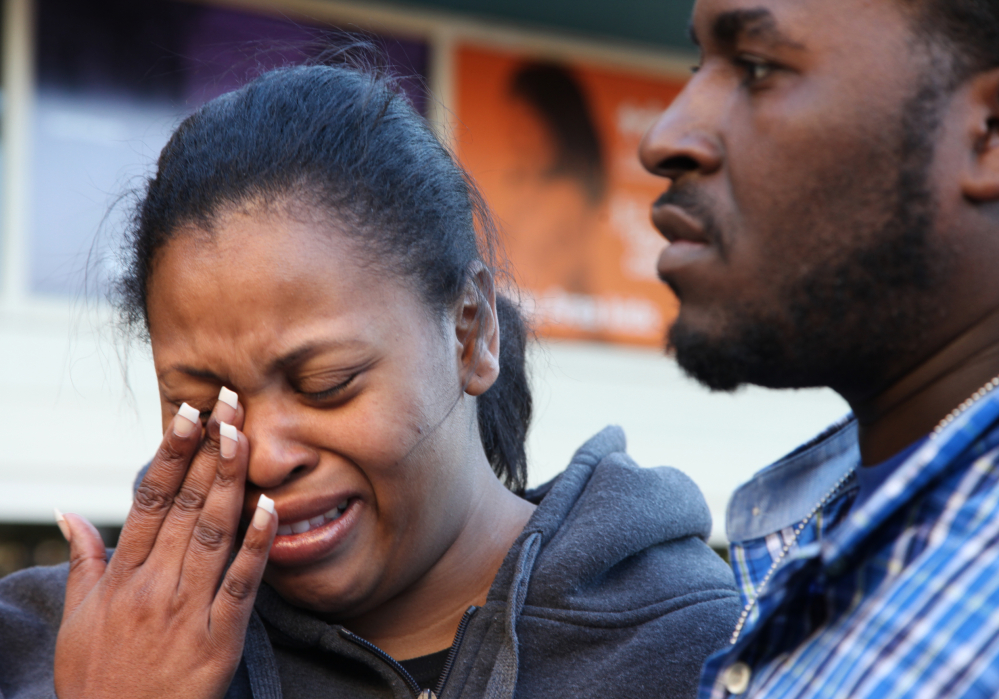OAKLAND, Calif. — A judge on Friday ordered a California hospital to keep a girl declared brain dead on life support following what was supposed to be a routine tonsillectomy.
The ruling by Superior Court Judge Evelio Grillo came as both sides in the case agreed to get together and choose a neurologist to further examine 13-year-old Jahi McMath and determine her condition. Another hearing was set for Monday.
The girl’s family sought the court order to keep Jahi on a ventilator while the second opinion is sought. They left the courtroom without commenting.
The family says doctors at Children’s Hospital Oakland wanted to disconnect life support after Jahi was declared brain dead on Dec. 12.
After her daughter underwent a supposedly routine tonsillectomy and was moved to a recovery room, Nailah Winkfield began to fear something was going horribly wrong.
‘IS THIS NORMAL?’
Jahi was sitting up in bed, her hospital gown bloody, and holding a pink cup full of blood.
“Is this normal?” Winkfield repeatedly asked nurses.
With her family and hospital staff trying to help and comfort her, Jahi kept bleeding profusely for the next few hours then went into cardiac arrest, her mother said.
Hospital officials said they couldn’t discuss the case because the family hasn’t given them permission to do so.
In a statement late Thursday, Dr. David Durand, the hospital’s pediatrics chief, wrote of Jahi’s case: “We are unable – without the family’s permission – to talk about the medical procedure, background or any of the details that are a part of this tragedy.
“We implore the family to allow the hospital to openly discuss what has occurred and to give us the necessary legal permission – which it has been withholding – that would bring clarity, and we believe, some measure of closure and deeper understanding of this medical case,” the doctor added.
In an interview at Children’s Hospital Oakland on Thursday night, Winkfield described the nightmarish turn of events after her daughter underwent tonsil removal surgery to help with her sleep apnea.
She said that even before the surgery, her daughter had expressed fears that she wouldn’t wake up after the operation. To everyone’s relief, she appeared alert, was talking and even ate a Popsicle afterward.
But about a half-hour later, shortly after the girl was taken to the intensive care unit, she began bleeding from her mouth and nose despite efforts by hospital staff and her family.
While the bleeding continued, Jahi wrote her mother notes. In one, the girl asked to have her nose wiped because she felt it running. Her mother said she didn’t want to scare her daughter by saying it was blood.
Family members said there were containers of Jahi’s blood in the room, and hospital staff members were providing transfusions to counteract the blood loss.
“I don’t know what a tonsillectomy is supposed to look like after you have it, but that blood was un-normal for anything,” Winkfield said.
The family said hospital officials told them in a meeting Thursday that they want to take the girl off life support quickly.
“I just looked at the doctor to his face and I told him you better not touch her,” Winkfield recalled.
DETERMINING BRAIN DEATH
Hospitals do a barrage of sophisticated tests to determine brain death, said Dr. Cristobal Barrios, an associate professor and a trauma and critical care surgeon at the University of California, Irvine. He is not involved in Jahi’s care and spoke about general hospital protocols.
The tests include touching a patient’s cornea to elicit a blink, moving a breathing tube to stimulate a gag reflex, tickling the back of the throat to bring on a cough, and applying pressure or pain.
If the patient fails to respond to all of those tests, doctors remove the breathing tube for a few minutes. If there is any brain activity, the patient should begin breathing within a few minutes, he said.
In some cases, doctors will also draw a blood sample, add radioactive tags and re-inject it into the body to track where it flows. If the blood doesn’t flow to the brain, Barrios said, there is no brain activity.
Generally, two teams of specialists must run the tests and determine independently that the patient is brain dead, he said. At UC Irvine, those evaluations must take place 12 hours apart if the patient is a child.
Barrios said it’s not unusual for family members to resist a diagnosis of brain death.
Copy the Story LinkSend questions/comments to the editors.



Success. Please wait for the page to reload. If the page does not reload within 5 seconds, please refresh the page.
Enter your email and password to access comments.
Hi, to comment on stories you must . This profile is in addition to your subscription and website login.
Already have a commenting profile? .
Invalid username/password.
Please check your email to confirm and complete your registration.
Only subscribers are eligible to post comments. Please subscribe or login first for digital access. Here’s why.
Use the form below to reset your password. When you've submitted your account email, we will send an email with a reset code.